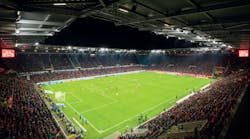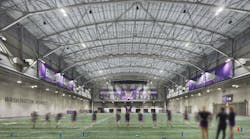Following are some of our most-read articles on UV LEDs — ranging from the market for UV LEDs, how these devices are applied, and recent commercial developments.
As editor Maury Wright explains in a feature covering LED and solid-state lighting innovations and updates presented at Strategies in Light 2014, ultraviolet LEDs are able to be leveraged due to the properties they exhibit in various spectra. UV-A LEDs (315–400 nm) are commonly used in curing applications, while UV-B and UV-C LEDs (280–315 nm and 100–280 nm, respectively) have potential in medical applications and purification/disinfection processes. Advances in these devices will depend on materials R&D evolving as well as manufacturing processes. Following are some of our most-read articles on UV LEDs — ranging from the market for UV LEDs, how these devices are applied, and recent commercial developments.
UV LEDs ramp up the quiet side of the LED market
Relative to visible LEDs, UV LEDs are a quiet market at only $30 million, yet recent breakthroughs in radiant power and intensity have enabled the displacement of mercury-vapor lamps in applications including UV curing and counterfeit detection.
The year 2013 witnessed an expansion of LED usage in UV curing applications with higher-power emitters enabling faster cure times across a variety of life science and industrial applications, and component lifetimes have increased as well.
LED lighting technology can enhance our health, serve in rehabilitative therapy, and enable diagnosis of critical life-threatening conditions. [Image source: Christian Pelant via Wikimedia Commons]
Sensor Electronic Technology Inc reports that LEDs in the UVB spectral band can double the shelf life of refrigerated produce after a study based on strawberries that was conducted with the USDA.
UV LEDs built on native AlN substrates emit peak wavelengths in the 250–280-nm range and target applications in life sciences such as water quality monitoring and chemical detection.
The Gen 2 UV LEDs can deliver flux output of 1000 mW from a 4.4×4.4-mm footprint and 2.8W of input power.











